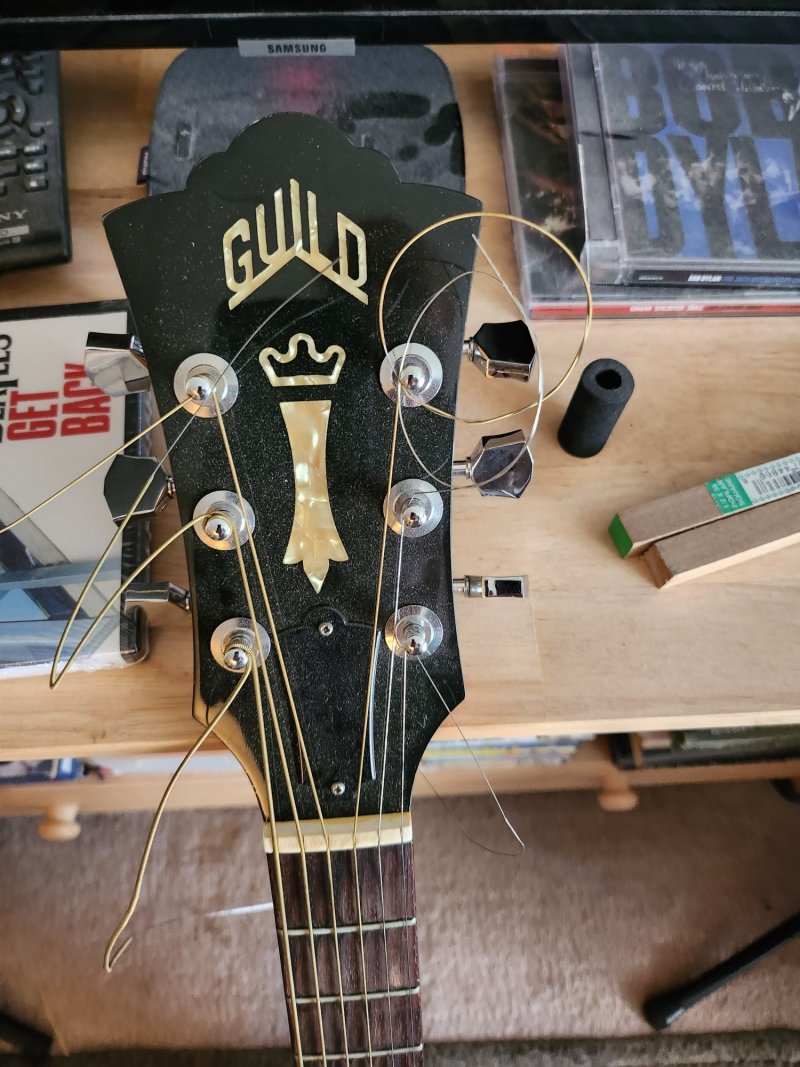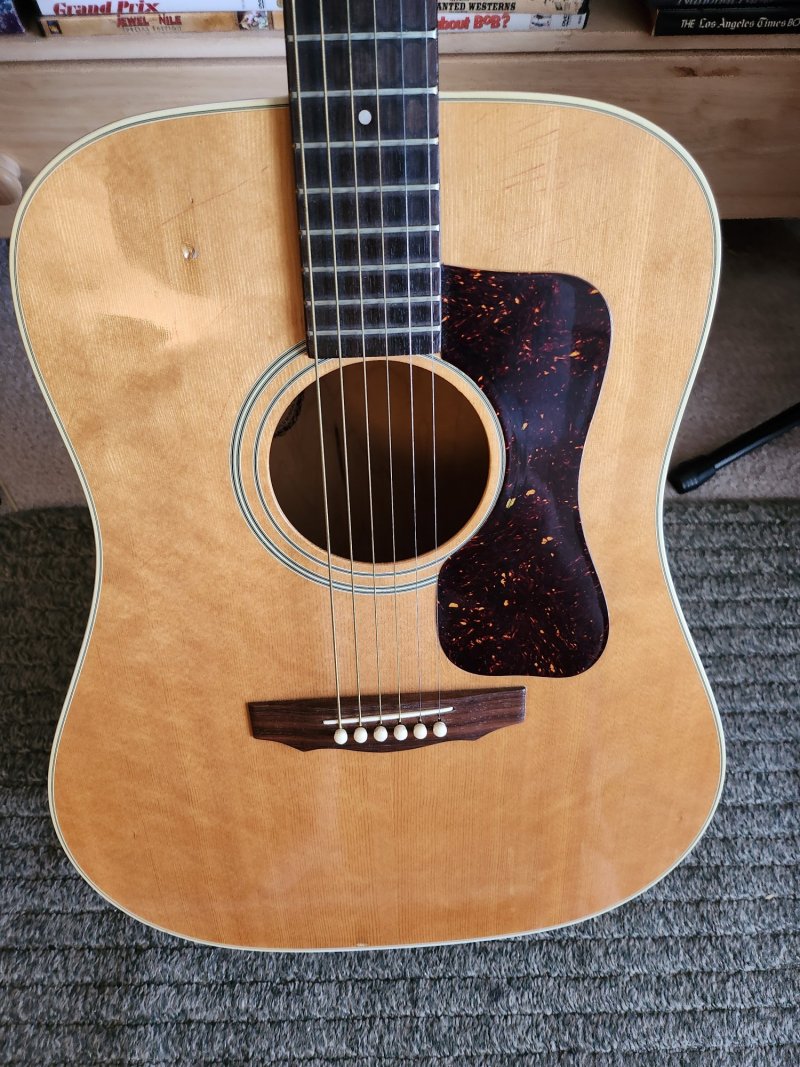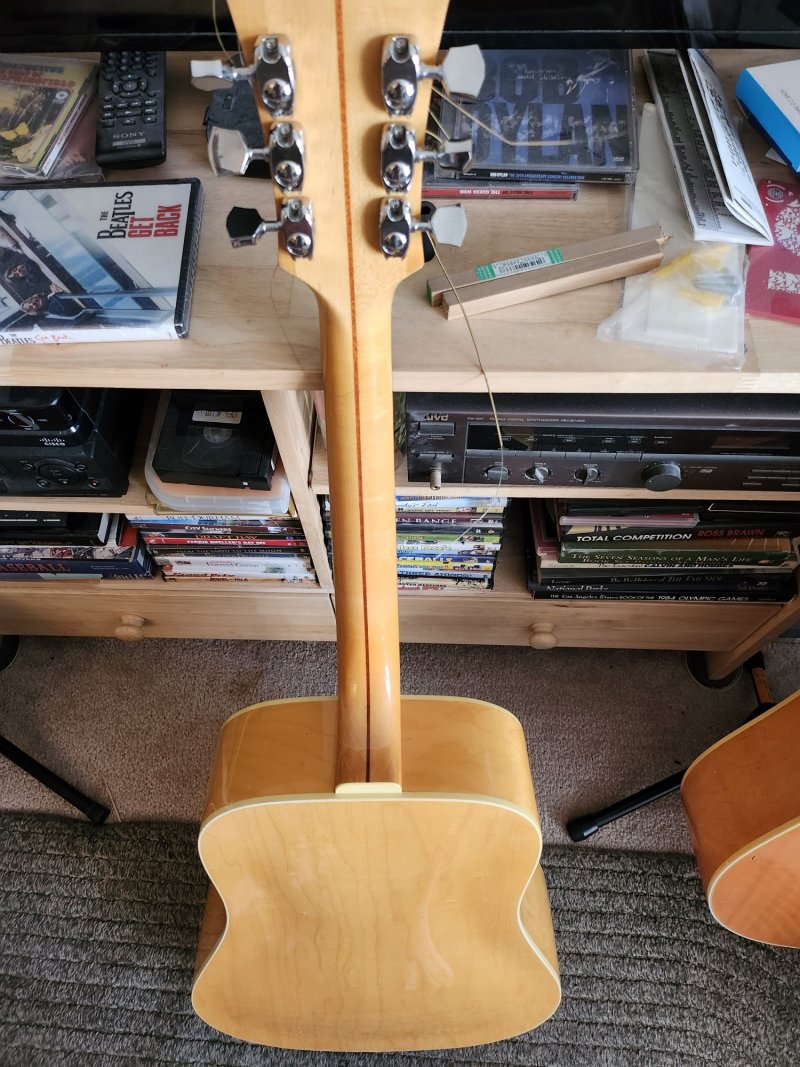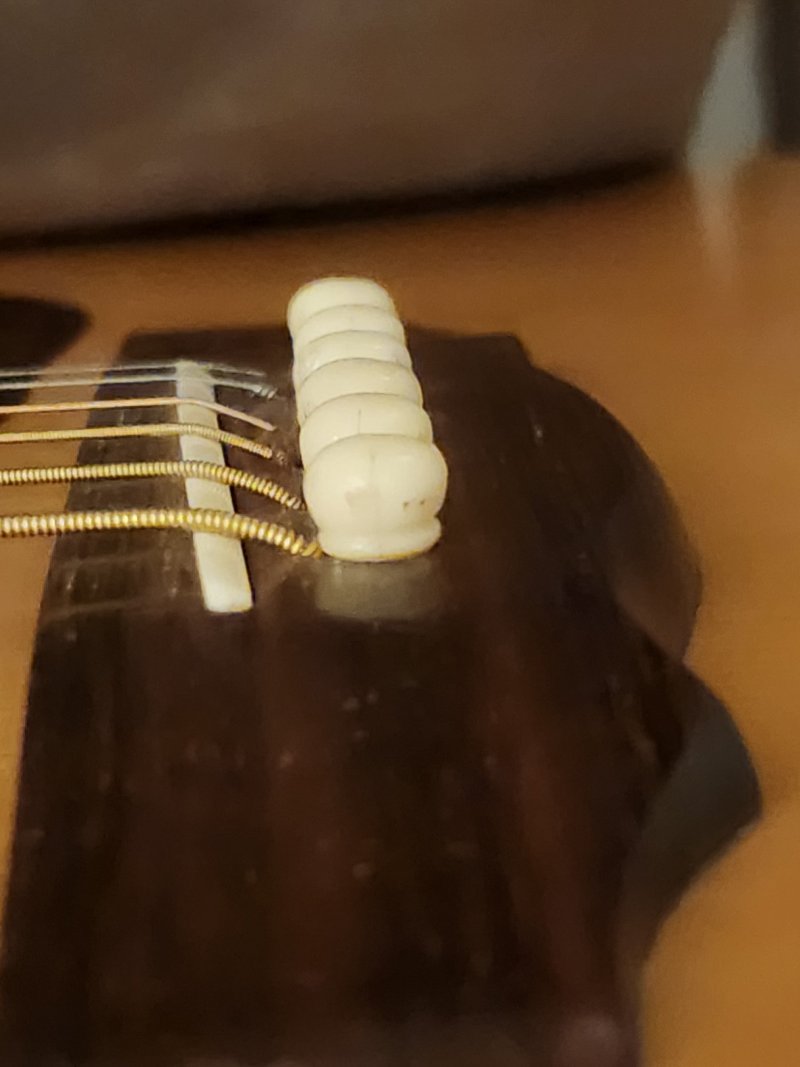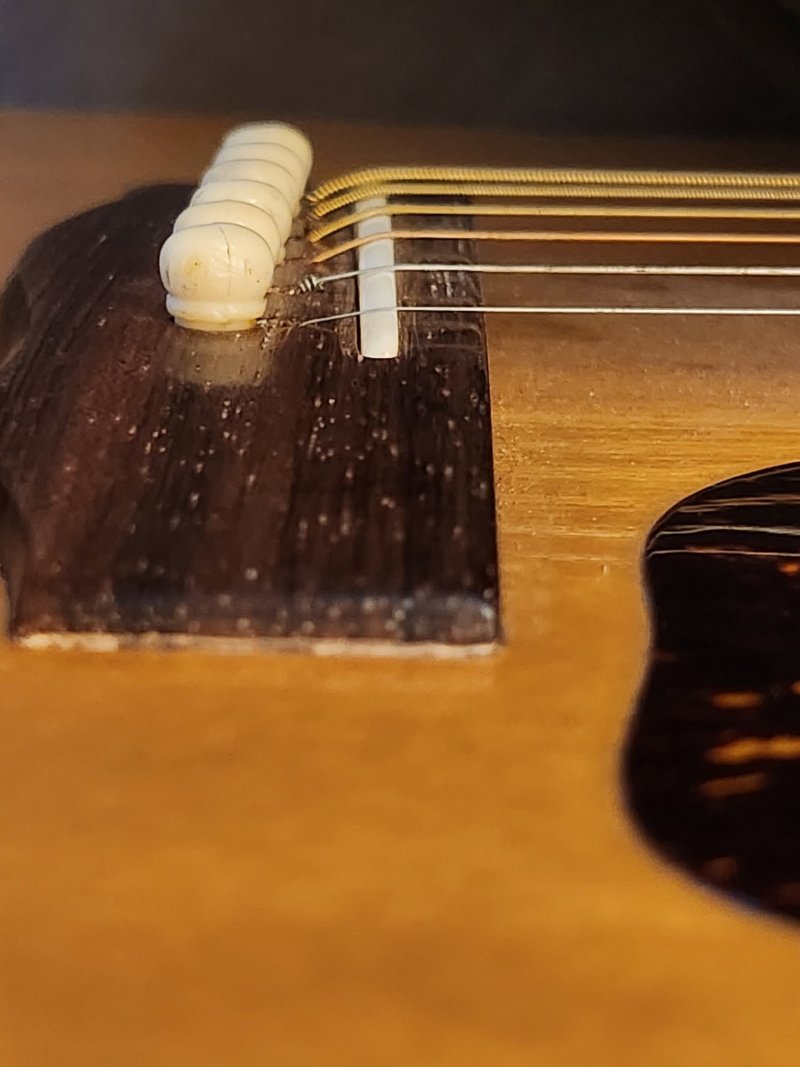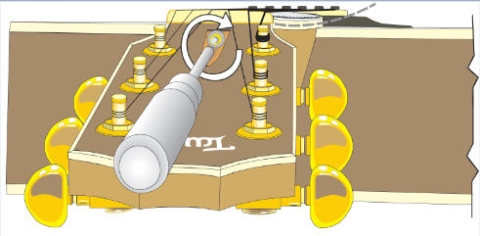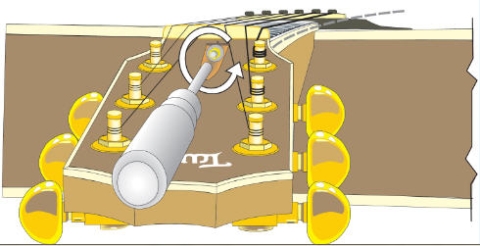I picked up a 1978 G-37 blonde with a maple neck the other day. The story was this woman's brother bought it in 1978 and died in 1980, she got the guitar and it had been in the case ever since. It looked ok, had one minor graunch in the top but looked ok otherwise. It's spruce top, all maple body, archback and maple neck with a rosewood fret board. All the strings were old and loose on it.
Got it home and decided to bring the string tension up on the old ones before installing new. It has some buzz on the thinner strings. So, I pulled the TRC and checked and the truss rod was not loose, but not very tight either. I tightened it a half turn and as I feared the buzz got worse, so I backed it all the way off, left a slight gap, and still had the buzz. So I tuned the strings up a full step to put more tension on it, put the TRC back on and I'll leave it for a few days and see what happens.
PS ... they do not buzz when open, only when fretted the first 4 or 5 frets.
My question is ... if that doesn't help it, what can I do? Any thoughts out there?
Thanks.
Got it home and decided to bring the string tension up on the old ones before installing new. It has some buzz on the thinner strings. So, I pulled the TRC and checked and the truss rod was not loose, but not very tight either. I tightened it a half turn and as I feared the buzz got worse, so I backed it all the way off, left a slight gap, and still had the buzz. So I tuned the strings up a full step to put more tension on it, put the TRC back on and I'll leave it for a few days and see what happens.
PS ... they do not buzz when open, only when fretted the first 4 or 5 frets.
My question is ... if that doesn't help it, what can I do? Any thoughts out there?
Thanks.
Attachments
Last edited:
